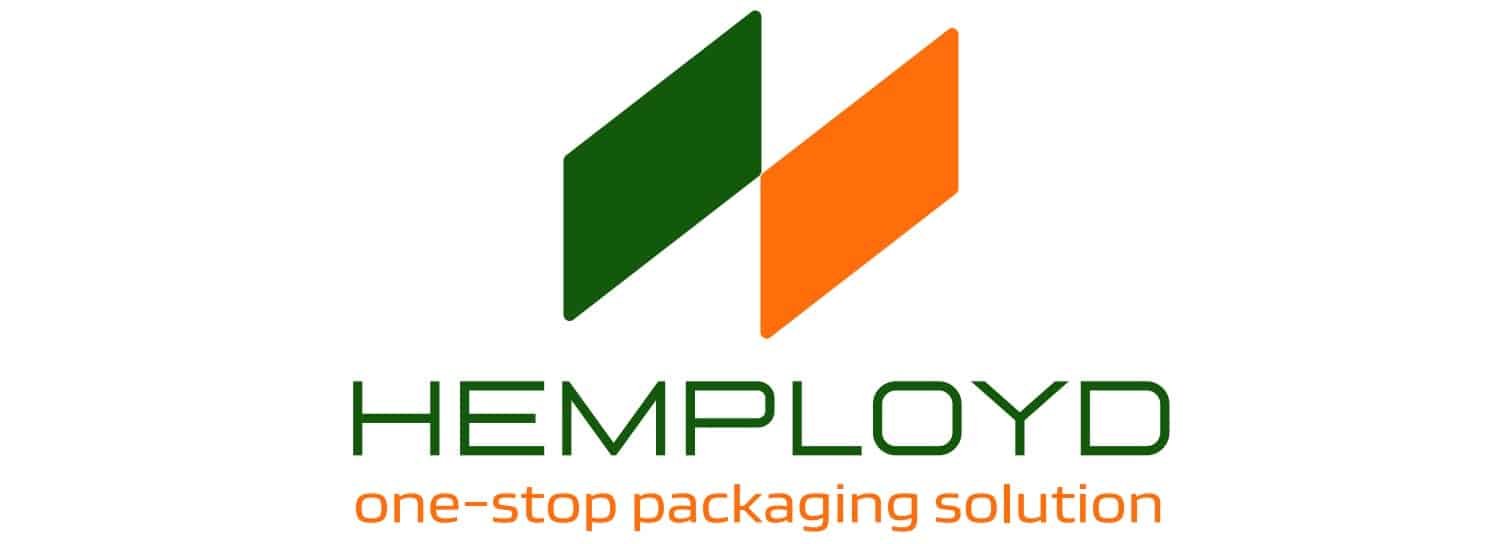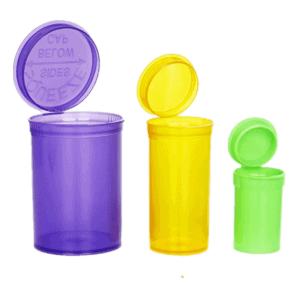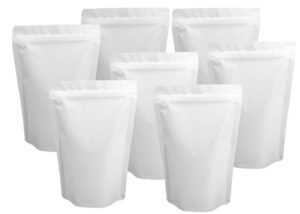
From the moment cannabis reaches the shelf, the marketing battle between companies begins. Should you choose plastic flip-top packaging or eco-friendly paper materials? Which option will make cannabis look and feel fresher and more appealing, encouraging customers to make a purchase and maximizing value for your brand?
This article will delve into the characteristics of Zweischalen-Verpackung für Cannabis and paper-based packaging, comparing their similarities and differences across dimensions such as durability, cost-effectiveness, customization potential, user experience, and environmental impact. Through case studies and industry best practices, we aim to help you choose the best option for your product.
Let’s embark on a journey of innovation in cannabis packaging, exploring every aspect of these two popular packaging types and discussing how they are reshaping the way consumers interact with cannabis products.

Overview of clamshell and paper-based cannabis packaging
First, let’s understand the basic characteristics of these two packaging types.
What is clamshell cannabis packaging?
Clamshell-Verpackungen für Cannabis is a container made from durable plastic or biodegradable materials. Its shape resembles a clamshell and can be opened and closed via a hinge. This design effectively protects cannabis products from moisture, air, and damage during transportation. It is commonly used for pre-rolled cigarettes, small packages of cannabis flowers, edible products, and cannabis concentrates. Clamshell cannabis packaging often features transparent materials, allowing customers to view the product without opening the packaging, enhancing the shopping experience.
When I first held the Zweischalen-Verpackung für Cannabis in my hands, I immediately noticed its sturdy structure. The smooth, hard plastic feels premium, and the secure snap-closure design assures me that the contents are well-protected. Compared to traditional paper packaging, clamshell cannabis packaging prioritizes durability.
Upon closer inspection, I envisioned the convenience it offers—moisture-resistant, airtight freshness, and a stylish, professional appearance. While paper packaging has environmental advantages, this packaging feels more like a luxurious choice for high-end brands. In that moment, I realized that this packaging is not just a container for cannabis but a vehicle for enhancing the product experience and reinforcing brand identity.
Features of paper cannabis packaging
Paper cannabis packaging is an eco-friendly alternative to plastic packaging. It is typically made from kraft paper, corrugated cardboard, or recycled cardboard. This packaging is lightweight, highly customizable, and environmentally friendly. The table below outlines its key features:
Merkmal | Beschreibung |
|---|---|
Anpassungsoptionen | Can be shaped, sized, and finished in many ways. |
Materials Used | Made from kraft paper, cardboard, or recycled paperboard. |
Dauerhaftigkeit | Protects products from damage, moisture, and light. |
Branding Elements | Logos, designs, and printing can be added for branding. |
Child-Resistant Features | Includes locks or closures to meet safety rules. |
Environmental Benefits | Biodegradable and recyclable, helping reduce plastic waste. |
Cost Implications | Often cheaper than other packaging materials. |
Paper packaging is an ideal choice for those looking to reduce environmental pollution.
Why these packaging types are important in the cannabis industry
Clamshell packaging and paper-based packaging play a significant role in the cannabis industry.
In 2024, the cannabis packaging market size reached $28.5 billion, with a projected compound annual growth rate (CAGR) of 22.74% from 2025 to 2034. 72% of consumers prefer eco-friendly packaging.
Companies like Contempo now offer compostable packaging solutions, reflecting the shift toward more environmentally friendly alternatives. AE Global’s “Talk Trash” initiative has removed over 326,000 pounds of plastic from the oceans, highlighting the urgency of reducing packaging waste.

The packaging directions of large companies can reflect market preferences. The eco-friendly cannabis packaging market is projected to reach $199 million by 2025.
Approximately 65% of consumers are willing to pay a higher price for sustainable packaging. Choosing these packaging types can enhance brand appeal and meet consumer preferences. Whether prioritizing durability, cost-effectiveness, or environmental responsibility, clamshell packaging and paper-based packaging offer unique advantages for cannabis products.
Why clamshell packaging has tamper-resistant and child-safe features
In ensuring the safety of cannabis products, clamshell packaging excels in tamper-proof and child-safe performance. Specifically:
Tamper-proof features
Sealed edges: Most clamshell packaging edges are sealed using heat sealing or high-frequency welding technology. Once the packaging is opened or attempted to be opened, these sealed edges are permanently damaged (e.g., torn, deformed, or separated).This damage is clearly visible, allowing consumers to easily identify if the product has been tampered with before purchase.
Material Characteristics: Clamshell packaging typically uses transparent plastics such as PVC or PET. These materials are difficult to restore to their original state without leaving traces when forcibly torn or cut. Any attempt to reseal the packaging will leave noticeable defects.
Single-use locking mechanism: Some blister packs feature tightly fitting snap-on or lockable closures that are difficult to open without damaging the packaging structure.
Integrated structure: Blister packs are typically molded as a single piece, with the product completely enclosed inside. Unlike some boxes that can be easily opened and closed,
Child safety features
Dual-action opening: This is the most common child safety design. For example, it may require pressing one or more specific points on the packaging while simultaneously pulling or sliding another part. Toddlers find it difficult to coordinate such complex actions.
In extreme cases (though this is uncommon in consumer products and more common in industrial or high-risk products), scissors or other tools may be required to open the packaging, which is beyond the capabilities of young children.
Hidden or inconspicuous opening points: Child-safe packaging avoids obvious opening cues, making it difficult for young children to identify how to open it. Adults can find the opening method through instructions or experience.
Specific pressure points: Some designs require pressure to be applied at very specific, inconspicuous locations to unlock, which requires precise operation.
Compliance with certification standards: Many countries and regions have mandatory child safety standards for specific products (such as medications and cannabis products), such as the CPSC standards in the United States. Blister packaging manufacturers design and test their products according to these standards to ensure their effectiveness.
Requires significant force or specific tools: Some child-safe bubble wrap designs are extremely sturdy and require adult strength to squeeze open or tear apart.
By combining a sturdy sealing structure, complex opening mechanisms, and compliance with legal safety standards, clamshell packaging ensures your products remain fresh, safe, and out of reach of children.
Key differences between clamshell packaging and paper packaging
Durability and product protection
Durability is critical for maintaining the freshness and integrity of cannabis products. Clamshell packaging excels in this regard, effectively resisting moisture, air, and physical damage. Its hinged lid forms a tight seal, ensuring that pre-rolled products remain fresh. It also protects products during transportation and storage.
In contrast, paper packaging may not offer the same durability as clamshell designs. While it can withstand light exposure and minor impacts, it may not effectively resist moisture or compression. However, its eco-friendly properties make it an ideal choice for brands prioritizing sustainability. If your business sells out its cannabis products on the same day, paper packaging could be a viable option; otherwise, based on my experience, clamshell packaging is a better choice.
When I first received the Zweischalen-Verpackung für Cannabis, I immediately noticed its sturdy structure. The smooth, hard plastic feels premium, and the secure snap-closure ensures that the products inside are well-protected.

Compared to conventional paper packaging, this packaging is clearly designed for durability.
Cost-effectiveness and value for money
Cost is another key factor to consider when choosing packaging. Paper packaging is typically more cost-effective, as materials like cardboard are easily accessible and affordable. Its lightweight nature also helps reduce shipping costs.
On the other hand, clamshell packaging may be more expensive due to the materials and manufacturing process. However, if your product requires sturdy protection and a premium presentation, the extra cost is worth it. In the cannabis industry, the profit margins can easily cover this expense.
In my experience, maintaining the freshness and brand identity of cannabis is the top priority, as this allows the product to command a higher price.
Customization and Branding Potential
Packaging plays a crucial role in showcasing brand identity. Both clamshell packaging and paper packaging offer customization options, but paper packaging offers greater flexibility. It supports various brand elements, including logos, colors, and complex designs, helping to create a unique visual identity.Special processes like embossing and foil stamping can further enhance the packaging’s appeal.
Clamshell packaging offers customization possibilities but has certain limitations. The material’s transparency allows customers to see the product inside, which is an advantage, but it may limit the space available for brand elements. However, clamshell packaging can still incorporate necessary information like health warnings and age restrictions, making it suitable for brands seeking a clean, professional appearance.
User Experience and Convenience
When selecting cannabis packaging, ease of use is a key consideration. Packaging must not only protect the product but also provide a smooth and convenient user experience. Clamshell packaging and paper packaging each have their own advantages in this regard.
Clamshell packaging excels in user-friendliness. Its hinged lid opens and closes easily, ensuring product safety and freshness. The transparent material allows customers to view the product without opening the packaging, enhancing the shopping experience. Additionally, clamshell packaging offers excellent protection against moisture and air, maintaining product quality over extended periods. For consumers prioritizing durability and convenience, clamshell packaging is the top choice.

Paper packaging is the ideal choice for environmentally conscious consumers.Its lightweight nature makes it extremely convenient for daily carry and use. Many paper packaging designs incorporate child-safe lock mechanisms, balancing safety and convenience. Features such as easy-to-open or re-sealable closures further enhance user experience, allowing consumers to access products whenever needed. Studies show that biodegradable packaging (such as Bioleader’s solutions) can reduce waste by up to 35% and improve customer satisfaction. This clearly demonstrates the practicality and convenience of paper packaging for environmentally conscious consumers.
Ultimately, the choice between clamshell packaging and paper packaging depends on the specific needs and preferences of the target audience. If durability and a premium appearance are the top priorities, clamshell packaging is the best option.
Environmental impact of clamshell packaging and paper packaging
Recyclability and biodegradability
How recyclable and biodegradable is cannabis packaging? Clamshell packaging is typically made from plastics such as PET or HDPE, with a recycling rate of approximately 30%. This means that a significant portion of clamshell packaging ends up in landfills, causing environmental pollution. In contrast, paper packaging is highly biodegradable. Materials such as kraft paper and corrugated cardboard can break down naturally, minimizing environmental impact.
Carbon Footprint and Resource Efficiency
There are differences in the carbon footprints of clamshell packaging and paper-based packaging. The production process of clamshell packaging is energy-intensive, resulting in higher carbon emissions. Paper-based packaging, especially when made from locally sourced materials, can significantly reduce transportation emissions and utilize renewable resources.
Sustainable practices focus on optimizing resource efficiency. Companies can minimize their ecological footprint by sourcing raw materials locally and monitoring environmental impacts. Regulatory pressures are also driving the shift toward reducing plastic waste and promoting recyclability. Choosing paper-based packaging aligns with these sustainability goals and helps reduce the carbon footprint associated with packaging.
Waste Management and Sustainability Challenges
Cannabis packaging waste management presents unique challenges. Clamshell packaging leads to plastic waste accumulation in landfills and oceans. In contrast, paper packaging can be easily composted or recycled, reducing landfill waste. For example, Amazon’s recyclable packaging program has eliminated millions of pounds of packaging waste.
Practical Guide to Choosing the Right Cannabis Packaging
Factors to Consider When Selecting Cannabis Packaging
When selecting cannabis packaging, consider the following key factors:
Sustainability: Consumers are increasingly preferring recyclable or biodegradable packaging. While eco-friendly options may be more expensive, they can enhance brand image and attract environmentally conscious consumers.
Consumer preferences: Approximately 72% of consumers prefer sustainable packaging. Using renewable materials can reduce packaging waste and optimize transportation costs.
Regulatory compliance: Packaging must comply with regulatory requirements, such as child-resistant designs, to ensure the safety of children and pets.
Durability: Sturdy materials like kraft paper or rigid plastic provide better protection for products during shipping and storage.

Best applications for clamshell cannabis packaging
Clamshell packaging excels in applications that require enhanced protection and product visibility. Its transparent and durable design allows customers to view the product while ensuring its safety. Clamshell packaging is particularly suitable for:
Pre-rolled cigarettes and edible products that require high-end display
Delicate items that require extra protection, such as herbs or microgreens
Products that require stackable and space-saving packaging for transportation
Tip: To maintain environmental friendliness, it is recommended to choose clamshell packaging made from recyclable or biodegradable materials.
Best applications for paper cannabis packaging
Paper packaging is an ideal choice for brands prioritizing sustainability and cost-effectiveness. Its lightweight nature, customization options, and biodegradability make it a versatile solution. Paper packaging is suitable for:
Floral products requiring protection from light exposure and minor impacts
Edible products requiring re-sealable or easy-to-open packaging for convenience
Businesses committed to reducing their carbon footprint and attracting eco-conscious consumers
Paper packaging allows brands to achieve sustainability goals while maintaining cost-effectiveness. It is a practical choice for brands seeking to balance environmental responsibility with cost-effectiveness.
Schlussfolgerung
When comparing clamshell packaging and paper cannabis packaging, it is clear that each has its own advantages and disadvantages. Clamshell packaging excels in durability and premium presentation, while paper packaging stands out for its cost-effectiveness and environmental benefits. The specific choice depends on product characteristics and the needs of the target audience.
When making packaging decisions, it is essential to consider the needs and values of the target audience. If durability and a premium appearance are top priorities, clamshell packaging is the ideal choice. If cost-effectiveness and environmental sustainability are key factors, paper-based packaging is the better option.
Ultimately, the chosen packaging should align with the brand image, product characteristics, and customer expectations. By carefully evaluating the factors discussed in this article and considering the environmental impact of packaging decisions, if you require a clear packaging solution for your product, please feel free to contact our experts.




